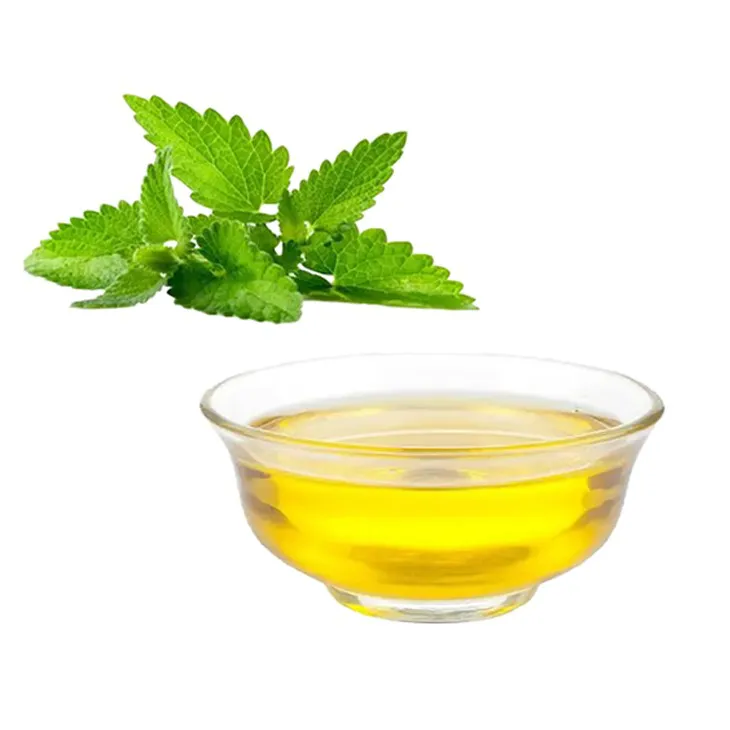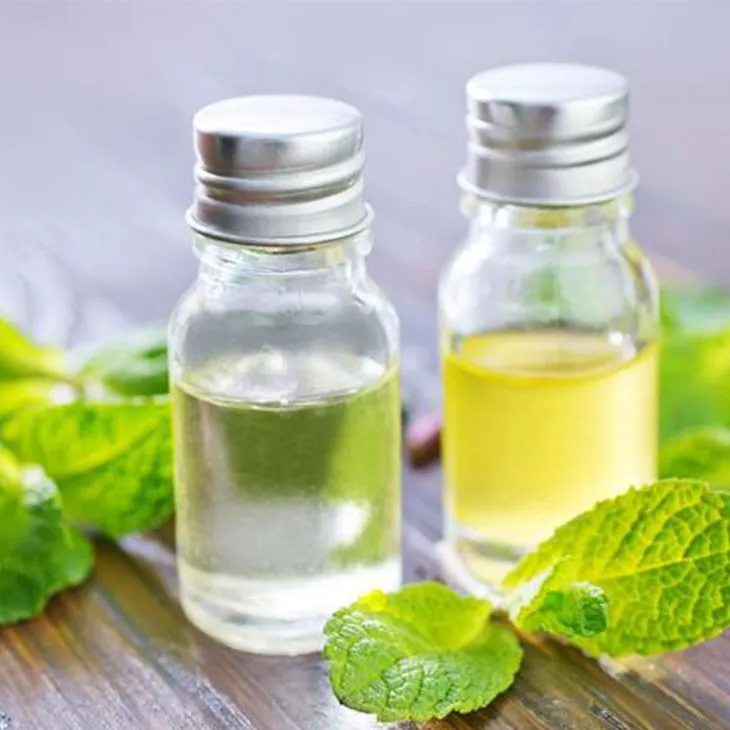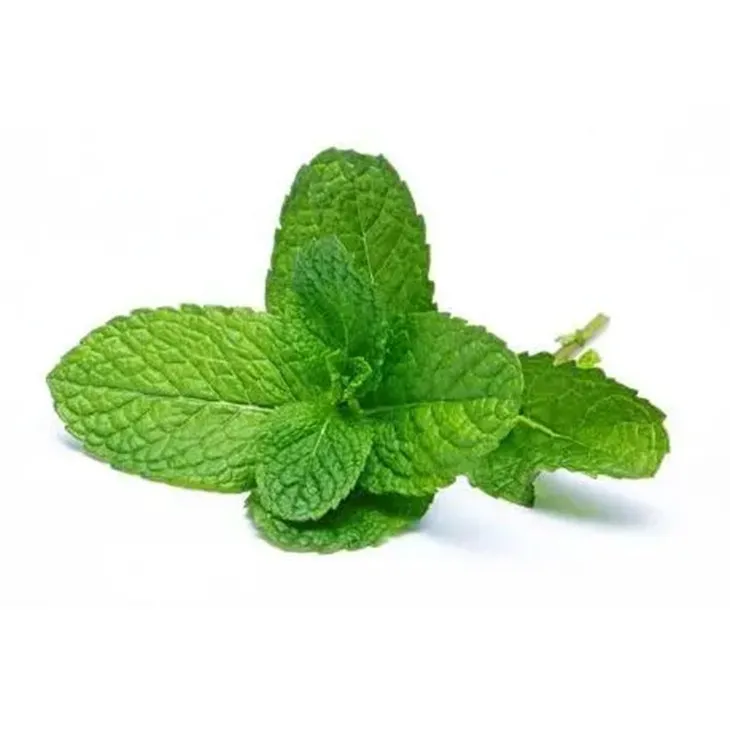- 0086-571-85302990
- sales@greenskybio.com
The best method for extracting peppermint oil.
2024-11-30

1. Introduction
Peppermint Oil is a highly valued essential oil known for its refreshing aroma and various therapeutic properties. It is widely used in the food, cosmetic, and pharmaceutical industries. Efficient extraction methods are crucial to obtain high - quality Peppermint Oil. This article will analyze different extraction techniques, including traditional and modern ones, to explore the best ways to extract Peppermint Oil.

2. Steam Distillation
2.1 Principle
Steam distillation is one of the most commonly used traditional methods for extracting essential oils, including peppermint oil. The principle behind this method is based on the fact that essential oils have different vapor pressures compared to water. When steam is passed through the plant material (peppermint in this case), the volatile compounds in the peppermint, which include the oil, vaporize along with the steam. Since the boiling point of the mixture of steam and essential oil is lower than the boiling point of water alone, this allows for the extraction of the oil without causing excessive heat damage to the delicate components of the peppermint oil.
2.2 Procedure
- First, fresh peppermint leaves and stems are harvested. It is important to choose the right time for harvesting, usually when the peppermint is in its prime growth stage to ensure a high oil content.
- The harvested material is then washed thoroughly to remove any dirt or impurities.
- After that, the peppermint is coarsely chopped or bruised to break the cell walls, which helps in the release of the oil during distillation.
- The chopped peppermint is placed in a distillation apparatus. Steam is then introduced into the apparatus at a controlled rate. The steam passes through the peppermint material, carrying the volatile oil components with it.
- The vapor mixture of steam and peppermint oil then enters a condenser, where it is cooled down. As a result, the vapor condenses back into a liquid state.
- Since the oil and water do not mix completely, they can be separated using a separator funnel. The peppermint oil, which is lighter, will float on top of the water layer, and can be carefully collected.
2.3 Advantages and Disadvantages
- Advantages:
- It is a relatively simple and cost - effective method. The equipment required for steam distillation is not overly complex and is widely available in many laboratories and small - scale production facilities.
- It is a well - established method with a long history of use. This means that there is a lot of knowledge and experience available regarding its operation and optimization.
- The quality of the peppermint oil obtained through steam distillation is generally high, as it preserves the natural aroma and therapeutic properties of the peppermint.
- Disadvantages:
- The process can be time - consuming, especially when large quantities of peppermint are to be processed. The slow rate of steam passing through the plant material and the subsequent condensation steps can limit the overall production rate.
- Some of the more heat - sensitive components of the peppermint oil may be slightly affected by the heat during the distillation process, although this is generally not a major issue for most applications.

3. Solvent Extraction
3.1 Principle
Solvent extraction involves the use of a suitable solvent to dissolve the peppermint oil from the plant material. The choice of solvent is crucial, as it should have a high affinity for the oil components and be easily removable later. Common solvents used for peppermint oil extraction include hexane, ethanol, and ethyl acetate. The solvent penetrates the plant cells and dissolves the oil, forming a solution.
3.2 Procedure
- The peppermint plant material is dried and ground into a fine powder. This increases the surface area available for the solvent to interact with the oil - containing cells.
- The ground peppermint is then placed in a Soxhlet extractor (a common apparatus for solvent extraction) or in a simple extraction vessel if a Soxhlet is not available.
- The chosen solvent is added to the extraction vessel. The amount of solvent should be sufficient to cover the peppermint powder completely.
- The extraction is carried out for a specific period of time, usually several hours. During this time, the solvent continuously extracts the oil from the peppermint.
- After extraction, the solvent - oil solution is filtered to remove any solid particles of the plant material.
- The solvent is then evaporated, either by using a rotary evaporator or by simple distillation in case of more volatile solvents. As the solvent evaporates, the peppermint oil is left behind.
3.3 Advantages and Disadvantages
- Advantages:
- Solvent extraction can be more efficient in terms of extracting a higher yield of peppermint oil compared to steam distillation. This is because the solvent can more thoroughly penetrate the plant cells and dissolve the oil.
- It can be carried out at lower temperatures compared to steam distillation, which is beneficial for preserving the more heat - sensitive components of the peppermint oil.
- Disadvantages:
- The choice of solvent is critical, and some solvents may leave behind traces of residues in the final peppermint oil, which can be a problem for certain applications, especially in the food and pharmaceutical industries. For example, hexane is a non - polar solvent and may require additional purification steps to ensure the safety of the final product.
- The use of solvents also poses environmental and safety concerns. Solvents are often flammable and may require proper handling and disposal procedures to prevent accidents and environmental pollution.

4. Supercritical Fluid Extraction
4.1 Principle
Supercritical fluid extraction (SFE) is a modern and advanced extraction technique. In this method, a supercritical fluid, most commonly carbon dioxide (CO₂), is used as the extraction medium. A supercritical fluid is a substance that is at a temperature and pressure above its critical point. At this state, the fluid has properties that are intermediate between a gas and a liquid. CO₂ is a popular choice because it is non - toxic, non - flammable, and has a relatively low critical temperature and pressure. The supercritical CO₂ can penetrate the peppermint plant material and selectively dissolve the oil components, depending on the pressure and temperature conditions applied.
4.2 Procedure
- The peppermint plant material is prepared in a similar way as for solvent extraction, usually dried and ground to a fine powder.
- The powdered peppermint is placed in an extraction vessel. Supercritical CO₂ is then introduced into the vessel at a specific pressure and temperature above its critical point (for CO₂, the critical temperature is about 31.1 °C and the critical pressure is about 7.38 MPa).
- The supercritical CO₂ flows through the peppermint powder, extracting the oil components. The extraction time and the flow rate of the CO₂ are carefully controlled.
- After extraction, the pressure is reduced, which causes the supercritical CO₂ to return to its gaseous state. As it becomes a gas, it separates from the peppermint oil, leaving the oil behind.
4.3 Advantages and Disadvantages
- Advantages:
- Supercritical fluid extraction with CO₂ is a very clean and environmentally friendly method. Since CO₂ is non - toxic and non - flammable, there are no concerns about solvent residues or harmful emissions.
- The selectivity of the extraction can be precisely controlled by adjusting the pressure and temperature. This allows for the extraction of specific components of the peppermint oil, which can be useful for obtaining a more refined and pure product.
- It can be a relatively fast process compared to traditional methods like steam distillation, especially when optimized for large - scale production.
- Disadvantages:
- The equipment required for supercritical fluid extraction is relatively expensive, which can be a major barrier for small - scale producers or laboratories with limited budgets.
- The operation and maintenance of the SFE equipment also require specialized knowledge and skills, which may not be readily available in all settings.

5. Comparison and Conclusion
5.1 Comparison
- When comparing steam distillation, solvent extraction, and supercritical fluid extraction for peppermint oil extraction:
- Steam distillation is a traditional and reliable method, suitable for small - to medium - scale production. It is cost - effective but may not be as efficient in terms of yield as solvent extraction.
- Solvent extraction can offer a higher yield but has potential issues with solvent residues and environmental and safety concerns.
- Supercritical fluid extraction is a modern and clean method with high selectivity, but it is expensive and requires specialized equipment and knowledge.
5.2 Conclusion
The choice of the best method for extracting peppermint oil depends on various factors such as the scale of production, the required quality of the oil, budget constraints, and environmental and safety considerations. For small - scale and traditional applications where cost is a major factor, steam distillation may be the preferred method. For larger - scale production with a focus on higher yields and where the proper handling of solvents can be ensured, solvent extraction could be considered. However, for applications where high purity, selectivity, and environmental friendliness are crucial, supercritical fluid extraction with CO₂ offers a very attractive option. In the future, as technology advances and the cost of supercritical fluid extraction equipment decreases, it may become more widely adopted as the optimal method for peppermint oil extraction.
FAQ:
What are the main traditional methods for extracting peppermint oil?
The main traditional method for extracting peppermint oil is steam distillation. In this process, steam is passed through the peppermint plant material. The heat causes the essential oil to vaporize along with the steam. Then, the vapor mixture is condensed back into a liquid, and the peppermint oil is separated from the water. This method has been used for a long time and is relatively simple and cost - effective.
How does solvent extraction work in peppermint oil extraction?
Solvent extraction involves using a solvent, such as hexane or ethanol. The peppermint plant material is soaked in the solvent. The solvent dissolves the peppermint oil along with other substances. Then, through a series of separation processes like evaporation and filtration, the solvent is removed, leaving behind the peppermint oil. However, this method requires careful handling of the solvent to ensure safety and to avoid any solvent residues in the final product.
What are the advantages of supercritical fluid extraction for peppermint oil?
Supercritical fluid extraction has several advantages. Firstly, it can operate at relatively low temperatures, which helps to preserve the quality and chemical composition of the peppermint oil. Secondly, it can achieve a high selectivity, meaning it can target and extract the peppermint oil more precisely. Also, the supercritical fluid, often carbon dioxide, is non - toxic and environmentally friendly compared to some solvents used in other extraction methods. It results in a purer peppermint oil product with less contamination.
Which method is the most cost - effective for small - scale peppermint oil extraction?
For small - scale extraction, steam distillation is often the most cost - effective method. The equipment required for steam distillation is relatively simple and inexpensive. It does not need complex and costly machinery as some modern methods like supercritical fluid extraction. Although it may take a bit more time compared to other methods, it is a good option for those with limited resources and small - scale production needs.
How can one ensure the quality of peppermint oil during the extraction process?
To ensure the quality of peppermint oil during extraction, several factors need to be considered. Firstly, the quality of the raw peppermint material is crucial. Only fresh and high - quality peppermint should be used. Secondly, in the extraction method, proper parameters should be set. For example, in steam distillation, the right temperature and pressure should be maintained. In solvent extraction, the purity of the solvent and the extraction time should be carefully controlled. Additionally, proper storage conditions after extraction, such as in a cool, dark place in an airtight container, can also help preserve the quality of the peppermint oil.
Related literature
- Peppermint Oil Extraction: A Review of Traditional and Modern Techniques"
- "Optimizing Peppermint Oil Extraction: New Insights"
- "The Science Behind Peppermint Oil Extraction Methods"
- ▶ Hesperidin
- ▶ citrus bioflavonoids
- ▶ plant extract
- ▶ lycopene
- ▶ Diosmin
- ▶ Grape seed extract
- ▶ Sea buckthorn Juice Powder
- ▶ Beetroot powder
- ▶ Hops Extract
- ▶ Artichoke Extract
- ▶ Reishi mushroom extract
- ▶ Astaxanthin
- ▶ Green Tea Extract
- ▶ Curcumin Extract
- ▶ Horse Chestnut Extract
- ▶ Other Problems
- ▶ Boswellia Serrata Extract
- ▶ Resveratrol Extract
- ▶ Marigold Extract
- ▶ Grape Leaf Extract
- ▶ blog3
- ▶ blog4
-
Active components in dandelion leaf extract.
2024-11-30
-
Chinese Rose Hip Extract Factories.
2024-11-30
-
Supplier of Hedyotis diffusa extract.
2024-11-30
-
Standard - process stevia extract.
2024-11-30
-
The Best Apple Cider Vinegar Powder in 2024.
2024-11-30
-
The Maca Extract Brands Most Worth Buying.
2024-11-30
-
Konjac Powder
2024-11-30
-
Peppermint Oil
2024-11-30
-
Cocoa Extract
2024-11-30
-
Genistein
2024-11-30
-
Sugarcane Extract
2024-11-30
-
Chia Seed Powder
2024-11-30
-
Sea buckthorn Juice Powder
2024-11-30
-
Senna Leaf Extract
2024-11-30
-
Hericium erinaceus extract powder
2024-11-30
-
Bitter Melon Extract
2024-11-30




















